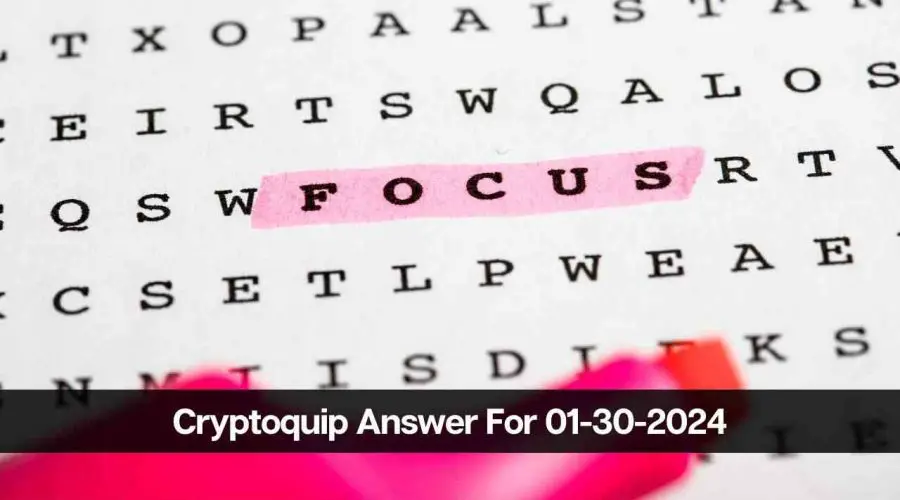Cryptoquip Answer For Today 01/30/2024
The Cryptoquip for Today 01/30/2024
LTG ET CTS HLUMV….. (Please refer to your newspaper for complete puzzle.)
TODAY’S CLUE: E = D
The Cryptoquip Answer for Today 01/30/2024
HOW DO YOU THINK OLD-TIME SAILORS FELT AFTER DRINKING SOME FLASKS OF WATERED-DOWN RUM? GROGGY.
What is Cryptoquip?
One type of word puzzle is the cryptogram, which uses encrypted text that the player must decode to uncover a message. While cryptograms were formerly a means of secure communication, they are currently mainly employed for amusement in publications and newspapers. The use of quotations is widespread in cryptoquotes and cryptoquips.
Newspaper and magazine cryptograms typically use a basic substitution cipher, which entails switching out one letter of the alphabet for another. For instance, the letter K may stand in for the letter A, and the letter R could stand in for the letter K. To decipher the messages, puzzle solvers employ a variety of techniques.
How Cryptoquip Work?
As the game is syndicated by King Features Syndicate, Inc., Cryptoquip letter puzzles can be found in numerous lifestyle and comedy sections of newspapers. This problem takes a spin on the classic cryptogram game, in which players swap out the letters of a word one by one. In this particular variant, the letters are always the same. Each Cryptoquip adds a new twist to the structure by including a quotation, or “quip,” that provides a clue about the solved word.
Separate the letters, words, and lines of text sufficiently so that you can work with them more readily as you write out the puzzle on a new page of scrap paper.
Look under the cryptogram for the letter hint. In today’s Cryptoquip Clue, for instance, “P equals Q,” the clue might be printed. In that case, you would now swap out all the Ps for Qs in the problem.
Strive to master contractions initially. You can easily find contracts inside the puzzle since they still have their apostrophes attached. You might be able to deduce the meaning of some letters just by looking at them since the majority of contractions finish in “t,” “nt,” “s,” or “m.”. If you see a “T’Y,” for instance, you can assume that “T” stands for “I” and “Y” for “M.” Now you can swap out those letters for others in the puzzle.
Move on to smaller words. Maybe you can figure out some letters by looking at the restricted number of one-letter, two-letter, and three-letter words. If you’ve figured out the answer for “I,” for instance, and then you see a lot of “X” letters standing alone in the problem, you can assume that “X” means “A.” Now you can change all the “X” letters in the hint to “A” letters in that example.
Try to find words that are used a lot. Deduce which words are likely to contain “the” or “and,” two additional short and often used words that are easy prey. Keep an eye out for words that have two letters, since they can provide you with further insights. “For,” “was,” and “his” are three-letter words that are also prevalent. Swap out the letters in the puzzles as you learn them. Under or above their replacements, write potential letters.

